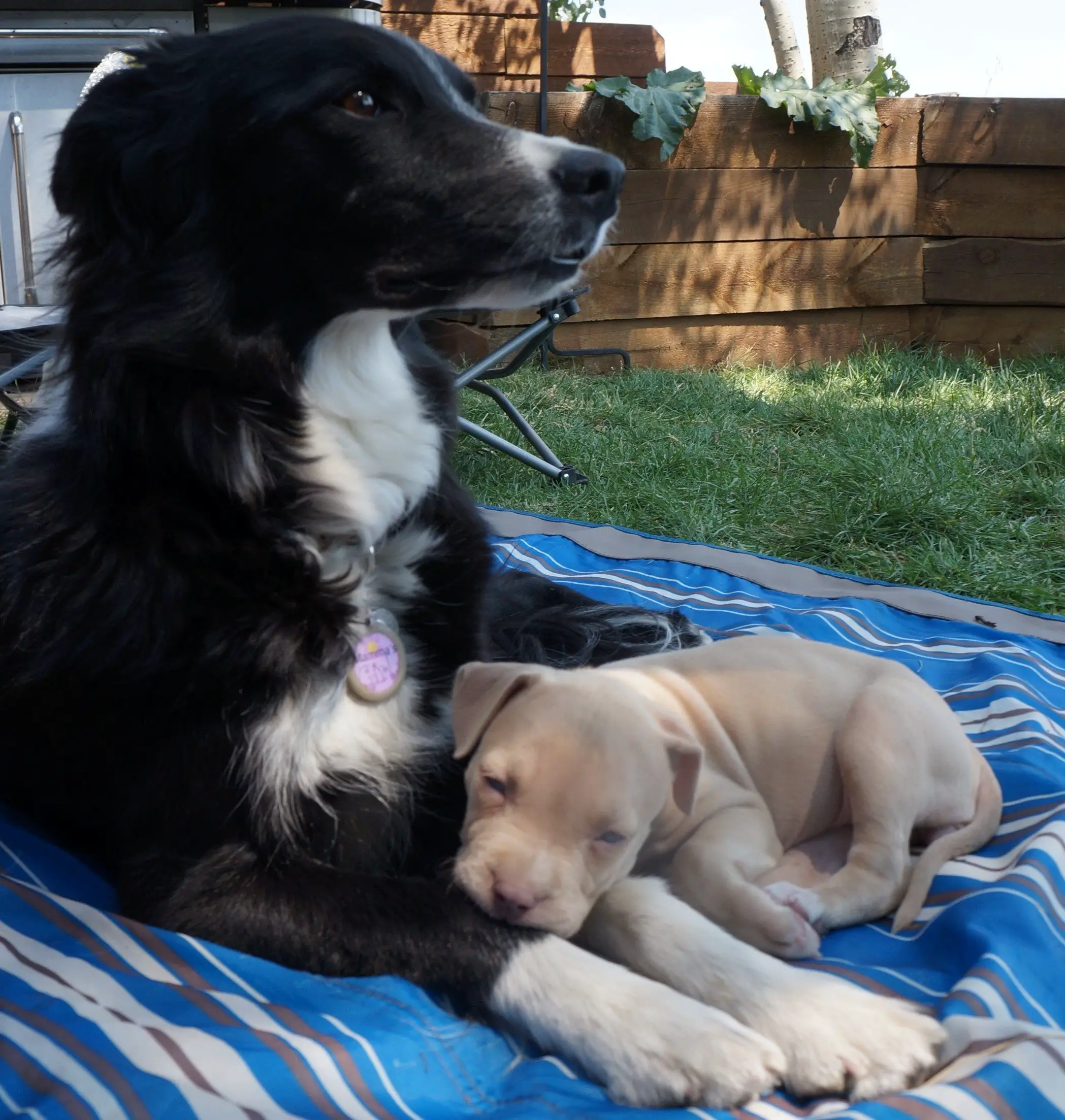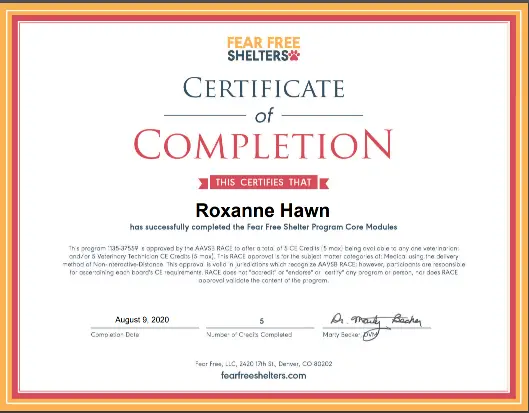100 Dogs and Counting is the latest book by Cara Sue Achterberg about her adventures fostering dogs and about the efforts of so many to save more dogs from places where they face little hope of being adopted. If you're looking for something new to read as the COVID-19 pandemic rages on and you feel strong enough to learn some tough things about the reality of animal sheltering and rescues, I recommend reading this book -- with a few caveats (at the bottom of the page).
More...
100 Dogs and Counting Book Review
So, the full title of the book is this: 100 Dogs and Counting -- One Woman, Ten Thousand Miles, and a Journey into the Heart of Shelters and Rescues. Whew! What's inside the book matches the length of that title (ha ha).
Please read this book, if you want to learn:
- What it's like to foster dogs
- Where things can go wrong in fostering, including escapes and quasi-hoarder situations
- How much of a strain fostering is on individuals and a family, especially if you do so continuously
- Where the endless stream of dogs needing foster homes and adoptions come from
- Who the people are that make these transfers and transports possible
- What creative thinkers do to help, even in the most strained areas
- How bare-minimum the conditions are at some shelters / rescues, including being kept in outdoor kennels
- How many amazing dogs still die daily in shelters and rescues
- Why people keep doing what their doing to help
- How you can get off the sidelines and help
You will likely struggle and cry about some of the stories and experiences in the book. If you're not well-versed in the reality of shelters and rescues in some parts of the country, what you learn may come as a shock. That said, it's important that all of us -- collectively -- understand the challenges and what role we do play and can play.
If you're only here for the book review, feel free to stop reading here.
The rest of this page offers some insights and context for members of our online community who know me and my dogs pretty well.
It's Different Here -- in Colorado
I read most of 100 Dogs and Counting while hanging out in the backyard with our latest foster baby, Velvet. A long line of people showed up at the shelter more than an hour before it opened -- all hoping to adopt her in July.
We're taking a break to let our hearts heal and to figure out how we'll get through the pandemic winter, so we probably won't have another foster puppy to share on social media for a while, so enjoy these pix of our most recent snuggle-baby.
The demand for adoptable pets in Colorado is always crazy-high, and it's even higher now with the pandemic and so many people adding dogs and cats to their families. Most of the big shelters and rescue groups in Colorado transport pets (mostly dogs) from other parts of the country. For example, most Wednesdays our shelter brings in whole vanloads of dogs from shelter partners, and by the weekend most, if not all, of them get adopted. It is common for our shelter to adopt out as many as 30 dogs, cats, and critters in a single day.
I share that because I totally admit that my experiences are NOT the norm, at least not right now in many parts of the country.
Before we deal with my caveats, please know that:
- Achterberg has fostered WAY more dogs than I have.
- She has visited WAY more shelters and rescues, even though I used to be on staff at one of the major humane organizations
- Achterberg has a kennel license and is subject to random inspections because she fosters so many dogs each year.
- She absolutely tells stories and does work that needs to be done.
My Caveats
As you may know from prior book reviews, I sometimes decline to review books if they contain references to dog training ideas and tools that I vehemently oppose. Such was the case with Achterberg's prior book (Another Good Dog) due to the use of an invisible fence / shock collar system on a foster dog.
Letting dogs jolt themselves at the end of a long line. I *almost stopped reading 100 Dogs and Counting on page 17 where a foster dog learned the hard way what happens when she reached the end of a long line / long leash at full speed. That's also something I do NOT recommend for your dogs or any foster dogs. It's dangerous and a very old idea about dog training to allow a dog to experience that sudden jolt. I'm confident that our shelter would fire me for something like this.
Fostering even when a resident dog doesn't love it. Because Achterberg's own dog isn't entirely happy about the parade of fosters that come through the house, Achterberg ends up going through a lot of effort and crating and gating and shuffling to deal with potential stresses and risks.
Longtime readers know that our original canine heroine, Lilly, was NOT a fan of most other dogs. Neither was our old boy, Ginko. While I wanted to foster, I did not when they were alive because it wasn't fair to them. Resident dogs come first at my house. Always. I waited a long, long time to have dogs who enjoy having little visitors. Clover LOVES the babies and has now helped raise 5 puppies, including Tori and Mr. Stix.
Allowing nearly anyone to foster dogs. My other struggle with some of the stories in the book stem from the vast differences in what's required and expected of me as a foster mom and what's done and allowed in Achterberg's community of rescuers and foster homes. At one point, she even says, "None of us had qualifications; we were all just making it up as we went along, banking on our good intentions and the fact that we were better than the other option for many of these dogs."
So many requirements for me as a puppy foster mom in Colorado
For comparison, in addition to all the things required of me to begin fostering in early 2019, the shelter required me to attend 2 days of onsite training in early 2020. And, then when the pandemic made it so that many of the other volunteers and foster families could not attend the same trainings planned for later in the year, the shelter added a new requirement to become fear-free certified, which consists of about 5-6 hours of online training and testing. The shelter removed anyone who didn't complete their certification by October 1 from the foster volunteer roster.
That high bar for participation likely deters many people from volunteering. I get that, and I even struggle with it sometimes -- especially now because pandemic stress makes everything take longer, feel harder, etc., so the certification felt like a big ask. (Total mental exhaustion is also the reason for the delay in getting this review rambled out / written.)
However, our shelter's requirements also give me confidence that all pets receive the best possible care and consideration for the physical and emotional wellbeing -- both on the shelter's campus and in our many foster homes.
For example, Mr. Stix stayed a few times with another foster mom. Knowing about the shelter's training and safeguards for ALL foster homes made me feel better about sending him off to someone else.
As another example, I have a friend in another state who sent some kittens into fostering recently. She found out they were being kept in cages (all the time) in a garage. She made arrangements to bring them back to her house.
I'm 100% behind getting more people to foster pets. I simply want you to know what you're getting into and to have at least some training -- especially in terms of animal training, behavior, and stress.







I totally agree with your point more people need to foster but there needs to be some training to make sure the animal is taking care of and loved.
I’ve read both of Cara’s books and several others around rescue. I also foster dogs for our local rescue. Training is good, but you can’t possibly train for every scenario. We rely heavily on mentors and the team in general for guidance and suggestions when something pops up that’s not common. Fostering is not for everyone, but for me it’s the best thing I’ve ever done in my life.
I’ve read both books, and rescue with Cara. I appreciate the care for dogs that is reflected in your caveats. I fully support the goal of educating all volunteers, and think the world would be a better place if everyone took the fear-free training. I want to note that the organization we rescue with screens its foster families, provides training for all its volunteers and assigns all new fosters a mentor, plus has certified dog trainers who volunteer available to help fosters with behavior issues.
I also want to point out that most of the dogs we’re rescuing don’t have the luxury of waiting for the perfect foster. No one else is coming to help them. I strongly believe that in order to stop dogs from suffering and dying needlessly, we have to get as many people involved as possible. If we leave a dog in a rural pound with no hope of adoption, where they are housed in a dank, dark building with no toys or bedding and only a concrete floor to lie on, because we have created requirements that scare fosters off, have we saved the dog from a foster who might make mistakes or have we left them to certain suffering? I think the best option is to put together an army of the willing, train them as best you can and support them as best you can, and everyone’s skills and experience grow with each dog they foster.
I too have read both of Cara’s books and while I don’t share your caveats, I will add my 50 cents, as a wannabe blogger and foster/rescue warrior. When roughly 670,000 good dogs are put down every year in this country, I have no problem with what Cara and her co-volunteers do. If we’re going to fix this problem, we need to be flexible. Cara crating some dogs and subjecting her crankier dogs to the endless parade of foster dogs is not a deal breaker for me. I too have a grumpy dog and I foster because if my organization waited for the perfect foster to materialize, more dogs wouldn’t make it out of the shelters and more would certainly die. I had my own two dogs, my son’s dog and agreed to take in a foster set of puppies because they were on the kill list. It was hell in my house for three weeks but we made it work. The problem we face in this country with “euthanasia” (let’s face it, it’s really killing) cannot be eliminated until we utilize all our resources. I rode one transport to rural AL and vowed that I would do whatever it took to get as many dogs out of there, because unlike where I live and unlike Colorado, Alabama feels very differently about dogs. Kittens in a garage are a dismal situation, juggling cranky dogs and foster dogs, I can live with that.